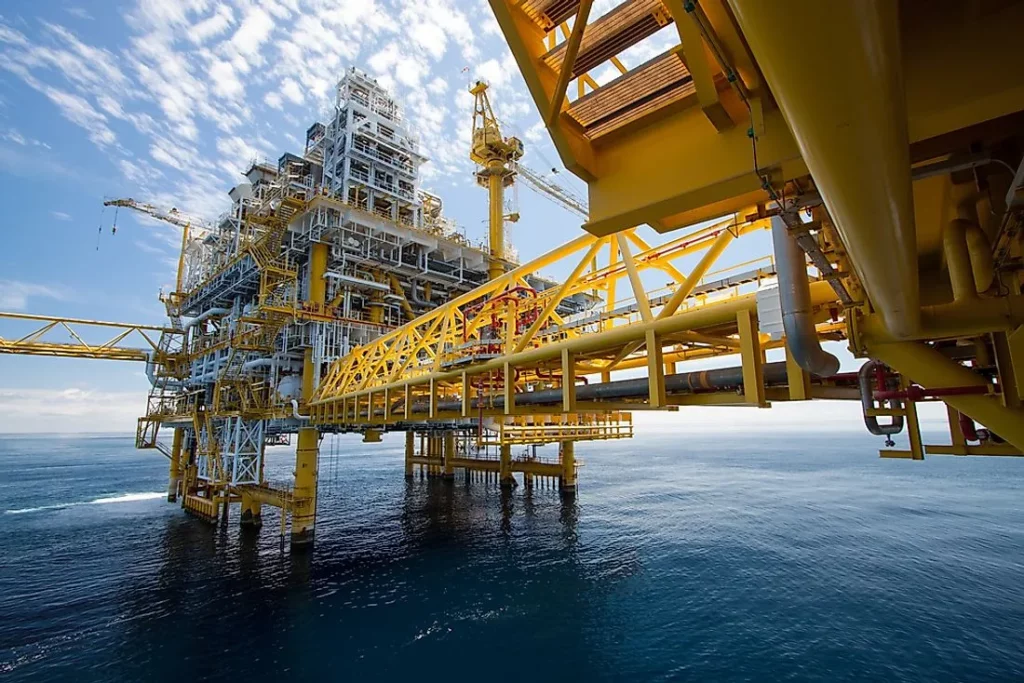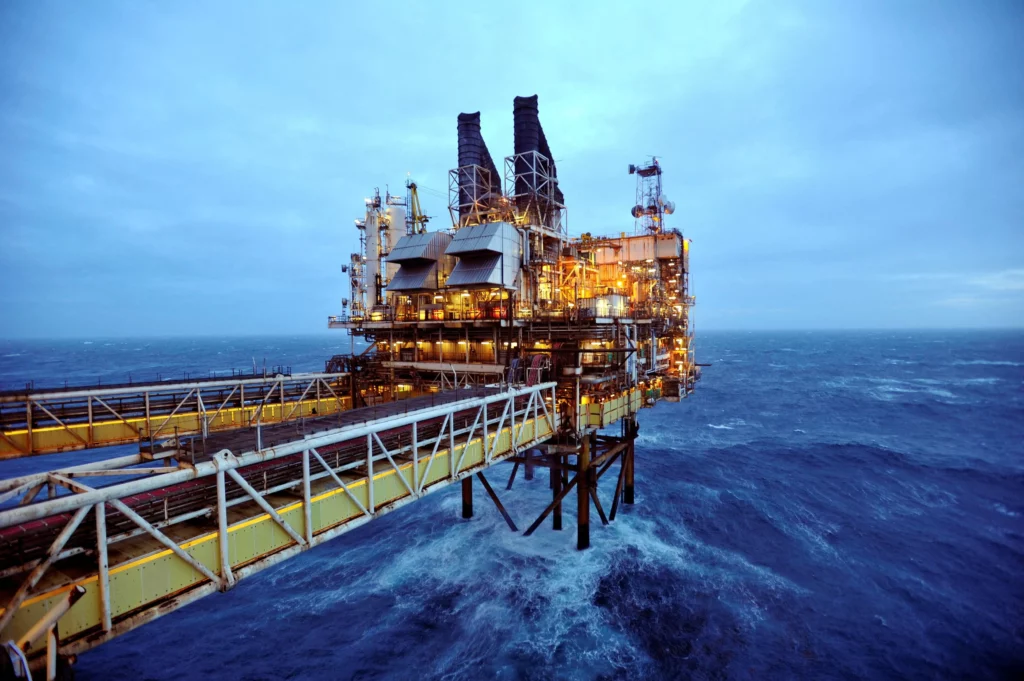The World’s Biggest Oil And Gas Companies
The companies that extract, process, and transport these energy sources hold enormous power since the globe is powered by oil and gas. Here, we’ve made a list of the World’s Biggest Oil And Gas Companies.

World’s Biggest Oil And Gas Companies
Globally, oil is the primary energy source, with oil firms providing billions of barrels of petroleum products daily to power industry and transportation.
The sector has not yet fully been impacted by growing public concern about climate change and initiatives to decrease the use of carbon-based fuels. Below are the 10 World’s Biggest Oil And Gas Companies:
1. Saudi Arabian Oil Co. (Saudi Aramco)
- Revenue (TTM): $590.3 billion
- Net Income (TTM): $156.5 billion
- Market Cap: $1.8 trillion
- 1-Year Trailing Total Return: -3.7%
- Exchange: Saudi Arabian Stock Exchange
Saudi Aramco is the biggest oil-producing corporation in the world in terms of revenue and one of the biggest businesses in the world overall.
This company is the only one on the list that isn’t traded in the US. The most integrated oil and gas business in the world, Saudi Aramco is based in strategic innovation hubs in the US, Europe, and Asia.
2. China Petroleum & Chemical Corp. (SNPMF)
- Revenue (TTM): $486.8 billion
- Net Income (TTM): $10.5 billion
- Market Cap: $55.7 billion
- 1-Year Trailing Total Return: 18.6%
- OTC Markets
Petrochemical and petroleum products are produced and distributed by China Petroleum & Chemical. Among other related items, the company sells jet fuel, chemical fertilizers, synthetic rubbers and resins, diesel, kerosene, and gasoline.
China Petroleum & Chemical, sometimes referred to as Sinopec, is one of the biggest petrochemical, gas, and oil refining corporations in the world.
3. PetroChina Co. Ltd. (PCCYF)
- Revenue (TTM): $486.4 billion
- Net Income (TTM): $20.9 billion
- Market Cap: $78.7 billion
- 1-Year Trailing Total Return: 12.5%
- OTC Markets
China National Petroleum Corporation is a state-owned company whose publicly traded subsidiary is called PetroChina.
With roughly 50% and 60% of China’s domestic oil and gas production volume coming from PetroChina, the company is the country’s major producer and distributor of these resources.
4. Exxon Mobil Corp. (XOM)
- Revenue (TTM): $386.8 billion
- Net Income (TTM): $51.9 billion
- Market Cap: $445 billion
- 1-Year Trailing Total Return: 85.6%
- Exchange: New York Stock Exchange
Exxon Mobil is an oil and natural gas exploration, production, trading, transport, and sales company.
It is a market leader in the energy and chemical manufacturing industries for profitability, operating facilities or selling products all over the world, and conducting exploration for natural gas and oil on six continents.
Esso, Exxon, Mobil, and ExxonMobil are the four brands that ExxonMobil uses to market fuels, lubricants, and chemicals.
5. Shell PLC (SHEL)
- Revenue (TTM): $365.3 billion
- Net Income (TTM): $43.4 billion
- Market Cap: $201.8 billion
- 1-Year Trailing Total Return: 37.47%
- Exchange: New York Stock Exchange
Shell is a global energy corporation that operates in 70 countries and is engaged in the production, marketing, refining, and exploration of natural gas and oil as well as the production and distribution of chemicals.

6. TotalEnergies SE (TTE)
- Revenue (TTM): $254.7 billion
- Net Income (TTM): $23.1 billion
- Market Cap: $157.1 billion
- 1-Year Trailing Total Return: 34.3%
- Exchange: New York Stock Exchange
TotalEnergies is a French company that explores for and produces natural gas, crude oil, and low-carbon electricity.
Additionally, Total manufactures and refines petrochemical goods. The corporation owns and runs gas stations throughout Africa, the United States, and Europe.
7. Chevron Corp. (CVX)
- Revenue (TTM): $227.1 billion
- Net Income (TTM): $34.2 billion
- Market Cap: $337.8 billion
- 1-Year Trailing Total Return: 56.8%
- Exchange: New York Stock Exchange
Chevron is an oil business that operates both downstream and upstream. While downstream activities include marketing, transportation, and refining, upstream operations deal with the exploration and production of oil and natural gas.
Chevron also engages in non-energy sectors like technological development, as well as mining and chemical operations.
8. BP PLC (BP)
- Revenue (TTM): $222.7 billion
- Net Income (TTM): -$11 billion
- Market Cap: $105.3 billion
- 1-Year Trailing Total Return: 38.4%
- Exchange: New York Stock Exchange
Exploration, production, and delivery of oil and petrochemicals are the activities of the British oil firm BP.
Petroleum products, including chemicals like acetic acid, ethylene, polyethylene, and terephthalic acid, are refined and sold by the corporation.
The business’s approach will change from that of an international oil company that is concentrated on resource production to that of an integrated energy company that is focused on providing investors and consumers with solutions. Castrol, Aral, and Amoco are BP brands.
9. Marathon Petroleum Corp. (MPC)
- Revenue (TTM): $173 billion
- Net Income (TTM): $12 billion
- Market Cap: $57.1 billion
- 1-Year Trailing Total Return: 85.3%
- Exchange: New York Stock Exchange
Refining and shipping petroleum products, Marathon serves clients throughout the United States. Marathon owns or leases thousands of kilometers of pipelines used for petroleum transportation.
Retail stores with the Marathon brand are among the branded sites in the US that are part of MPC’s marketing network.
10. Valero Energy Corp. (VLO)
- Revenue (TTM): $170.5 billion
- Net Income (TTM): $9.4 billion
- Market Cap: $47.3 billion
- 1-Year Trailing Total Return: 78.3%
- Exchange: New York Stock Exchange
Valero is the world’s second-largest producer of renewable fuels and the biggest independent petroleum refiner. Valero operates 33 wind turbines in the US and 15 refineries across the US, Canada, and the UK.
The world’s biggest oil and gas companies must make a crucial choice.
Concerns about climate change and the increasing shift to renewable energy sources raise questions about their future, although they are still major players in the global energy market.
To ensure that the world’s energy demands are supplied shortly, these energy behemoths must modify their business models to accommodate a low-carbon future.
CSN Team.
